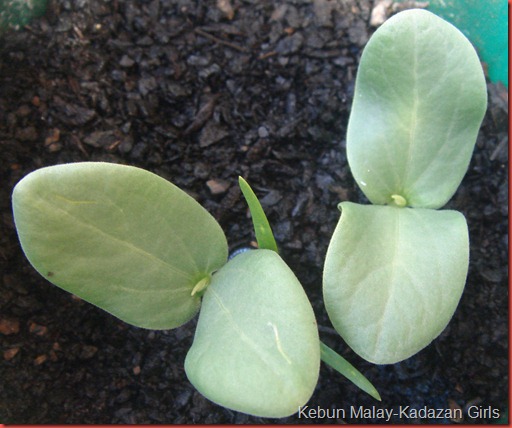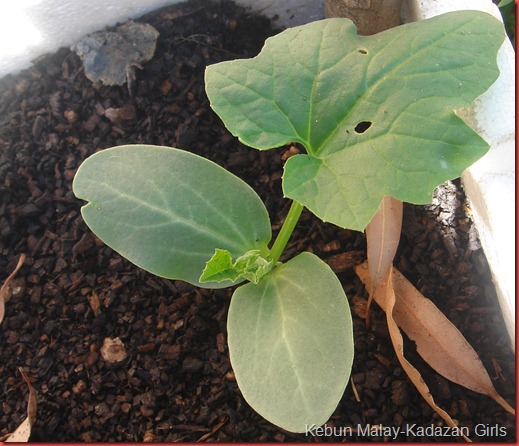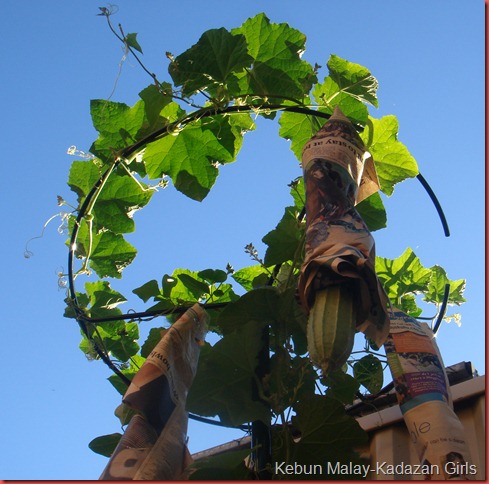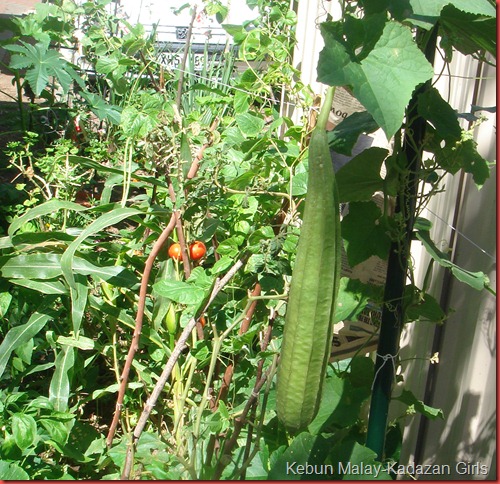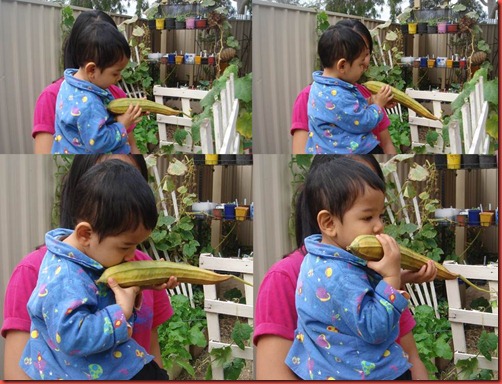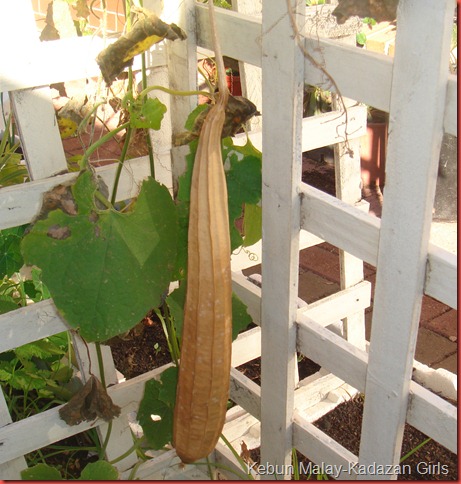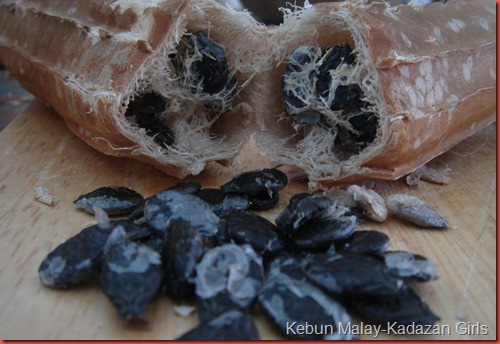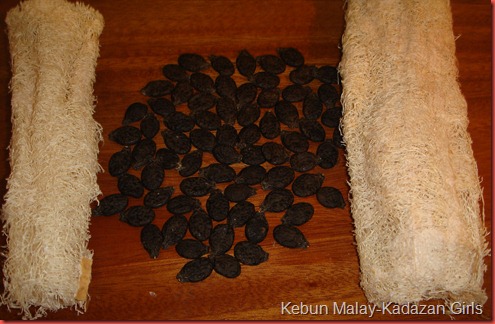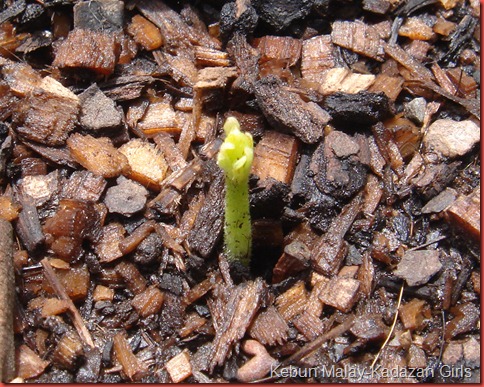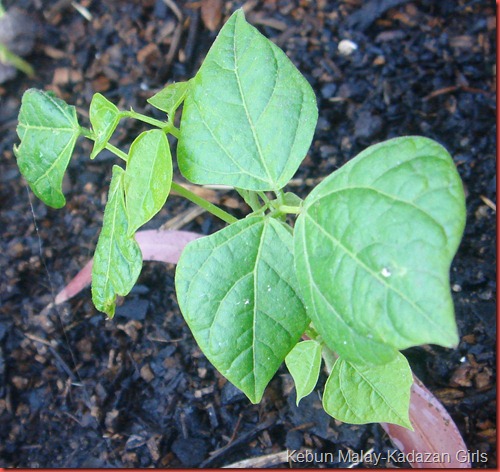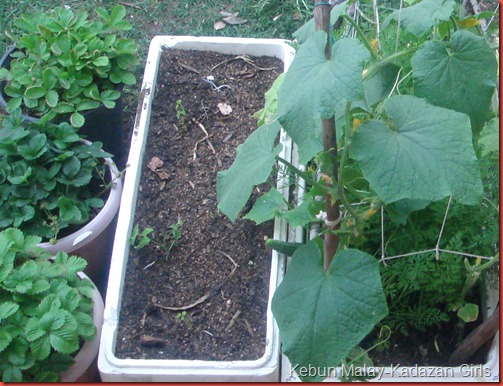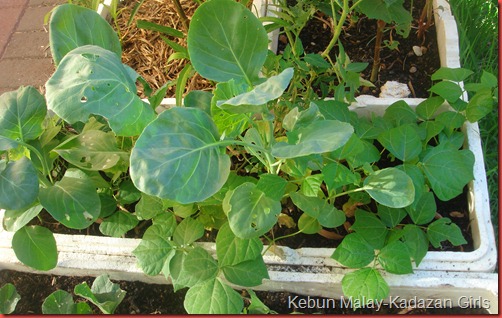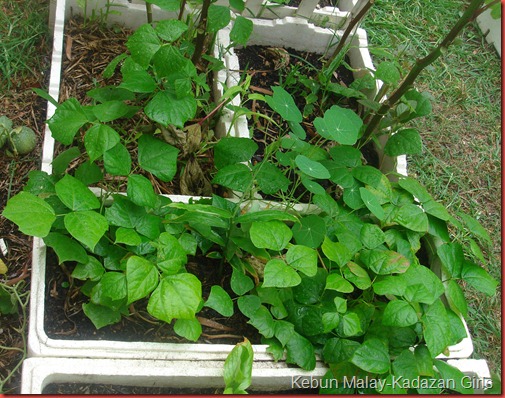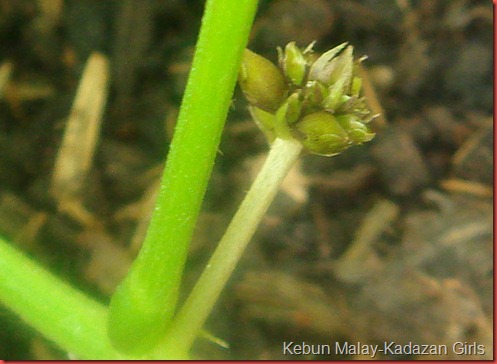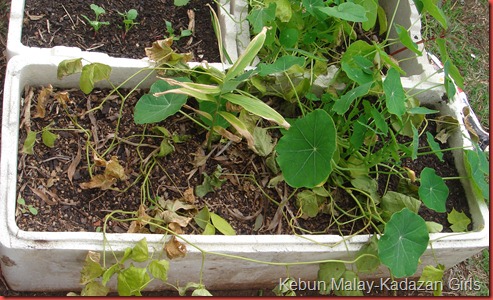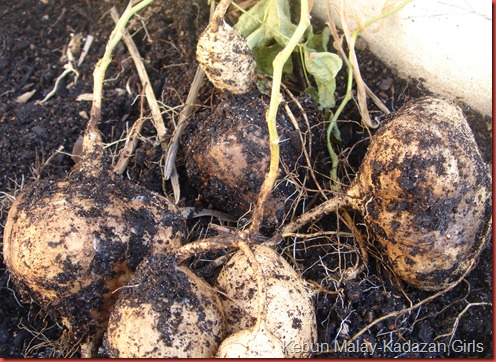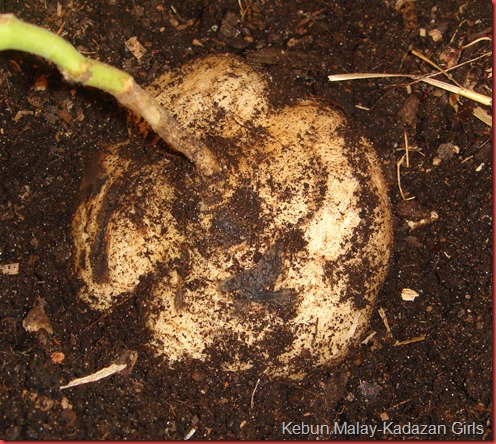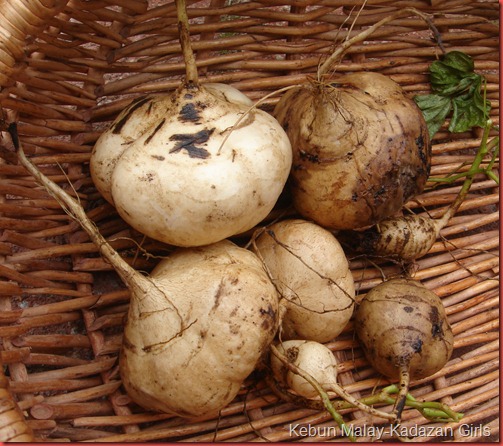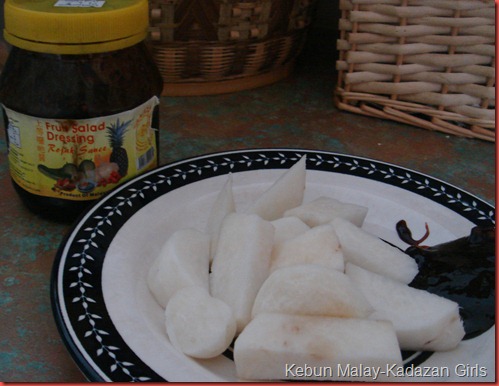Thursday, June 30, 2011
So Ugly but So Sweet
Tuesday, June 28, 2011
Black Pearl Anyone?
- Amaranth plant not tall and tall fence can perhaps act as physical barrier.
- Not only one amaranth are blooming but others as well in our garden, so the winds will carry the nearest pollen to the nearest available female which is around our garden.
- I won't know until I tested the seeds, but this mean have to wait until spring.
- Ours are red flowers, neighbours are green flowers which I am hoping that it is not closely related.
Monday, June 27, 2011
Massey Pea First Harvest
Sunday, June 26, 2011
Winter June Blooms
Friday, June 24, 2011
Container Gardening (June)
Wednesday, June 22, 2011
Angled Luffa Life Cycle
Angled luffa is also known as Chinese Okra but in my native tongue it is known as petola or ketola segi. When I did some googling in Japan its name is hechima. But I never saw one in any Niigata prefecture market or maybe did not notice it. I enjoyed growing angled luffa very much last summer because I don’t have to look after it and it thrive in Adelaide summer. Contrary to belief in temperate region, angled luffa grows really fast and produce within 8~10weeks. Angled luffa also grows very well in container. Angled Luffa likes mild weather. To my surprise, our angled lufffa managed to produce until end of May (end fall). The last angled luffa fruit produce when the weather day average temperature was 18 degree Celsius. Newly sprouted angled luffa seeds. Similar looking with cucumber seedling because they belong to the same cucurbit group.
Angled luffa first set of true leaves. I have a habit of planting seeds and forget to label them. So this is for future reference so I can differentiate it with cucumber.When I do label them but my sons like to collect the label like sticks.
More growth. Although angled luffa is said to be heat-loving vegetable. They will prefer a little bit of shade if you have really hot summer or grow them which receive only morning sun.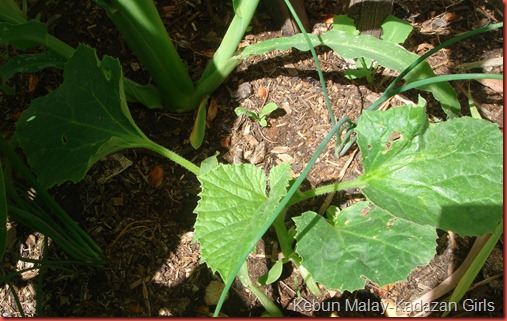
We put on clothes for our angled luffa fruit during very hot weather. They grow much better. This also help predator to hide on the look out for their favourite snack (pest).
Angle luffa flesh is like sponge. When you cook it in stir-fry or soup, angled luffa absorb the flavour easily. Although when you touch the skin it is hard, the flesh inside is very soft.
I have also noticed that unlike cucumber, summer and winter squash that we were growing, angled luffa is not easily susceptible to powdery mildew when we had damp weather. Our little inspector inspecting weather this angled luffa is ready to be harvested for its seeds.
When the seeds are ready to be collected, you could hear rattling sound when you shake the dried fruit.
Okra has five chambers when you slice it. But angled luffa looks like it has 3 chambers. Have to cut more to make sure whether this is true or not next time.
73 seeds were inside this dried angled luffa pod. More than enough for next planting. Angled luffa fibre is really coarse and tough in dried state. No wonder it was use to make soles for beach sandals. Will test it as a sponge for washing the dish.
Monday, June 20, 2011
White sweet potatoes and shoots with coconut milk dish
Sunday, June 19, 2011
Growing yam bean in Adelaide
I wasn’t sure whether we were able to grow yam bean or also known as jicama here in Adelaide as it is said to need a long growing season. But like angled luffa I was sceptical. So jicama was a new challenge for us growing them in our small little garden last warm season. Adelaide weather for me is a bit strange the weather change dramatically and temperature fluctuation is really high. Day and night temperature can sometime differ more than 10 degree Celsius. The normal summer will be blazing hot. So I expected many days of really hot weather and night which I won’t be able to sleep that much. During summer we always camp in the living room to sleep. However, we had only few really hot days and not a single night sleeping in the living room through summer.
I have never seen a yam bean plant my whole entire life. End of November I direct-sowed the seeds and when it sprouted it made me panic at first. I thought all my new jicama seedlings have been nibbled by pest because they were no leaf. if you use the camera and zoom in they do like small hands waving at you. But the naked eye view they look like it has been chomped by critters.
So it was a relieved to see their true leaves form. So next time we know what to expect from newly sprouted seeds.
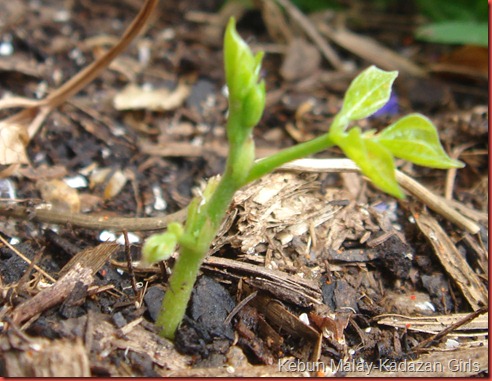
When the first heat-wave came, all of our yam bean plants growing on the front yard veggie patch died. I did not have a very deep container to sow yam bean seeds because it was full with other plants. So without any thought of success I simply sowed some seeds in 25cm depth container and 5 seeds sprouted. Well I have to console myself if it did not give me any tubers, we still can treat them as green manure. So it is still a win-win situation. Yam beans are legume relative of beans and lupins. Unlike beans and peas which the pods are harvested, yam bean pods are toxic and other parts as well. The only edible part is actually the root (tuber) which is deliciously eaten raw.
Middle of February and jicama growing together with kailan.
Early April of jicama progress. Jicama is a half-climber but needed help with climbing lesson on the okra plants. Suddenly we had ginger and nasturtium sprouting in jicama container some time during summer. Just to take note, we harvested the ginger and it was actually growing more rhizomes compare to the previous ginger harvest.
Our jicama plants did produce some buds at the end of summer but it never bloom. I suspect it is due to cold nights. I was hoping to collect some seeds and of course sharing it with other gardeners. Nope it won’t give me seeds.
This is how the plants look before we decided to quickly harvest all of them. I had to ask Lenay to help because I was too busy this week at school. Moreover, I just read that jicama tubers are very sensitive to temperatures below 12 degree Celsius it will start to rot. Believe it or not this is true. I should have harvested them earlier, yes sadly most of our tubers were rotten! JICAMA TUBER IS VERY SENSITIVE WITH TEMPERATURE. I had a bad feeling last week because suddenly nights were really cold because my husband who goes to work before 4AM told me several days when he entered the car it is 2 degree Celsius. The plants were still not looking that bad 10 days before we harvested them. Suddenly last week our jicama plants completely withered.
A lot of rain won’t cause the tuber to rot but please remember temperature is important factor to consider. Why do I say this because Lenay mother grows jicama plants in tropical weather (Borneo island) and after the plants died she just left all the tubers on the ground for months. When Lenay went back to her mother place end last year she followed her mother to her farm. They dug some yam bean tubers to bring back home and some were almost as big as a soccer ball. She said one plant can spread to 5m2 of many yam bean tubers. Needless to say, Lenay was not impressed with our jicama harvest. Although some got rotten, I am getting excited on growing jicama again next spring because at first I don’t think we will actually got to see tubers.
Hooray! We can grow yam bean here in Adelaide and it is also possible to grow them in containers. I had one plant that were sowed early January which was grown in container. The harvested tuber were the size of medium size apple. Just giving them 5 months to grow before harvesting should be fine.
This was the first time I tasted fresh home-grown yam bean. I think this is a plant worthy to grow and wait for 5 months. Definitely will plant much more next spring. Yam bean after washing out the dirt. See some got rotten?
We sliced those yam bean and dip it in Rojak sauce.
So happy to know the true flavour of yam bean. No more store ones for me. Can’t make a promise though, I might have cravings.We are growing kohlrabi for the first time this cool season. I read some comments that kohlrabi taste a bit like yam bean. Hope this is true and looking forward to taste it.

